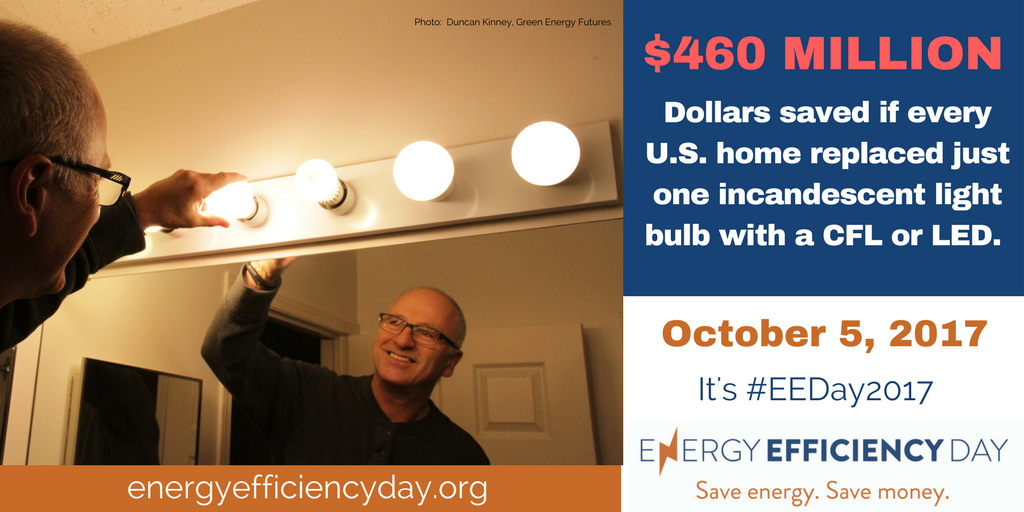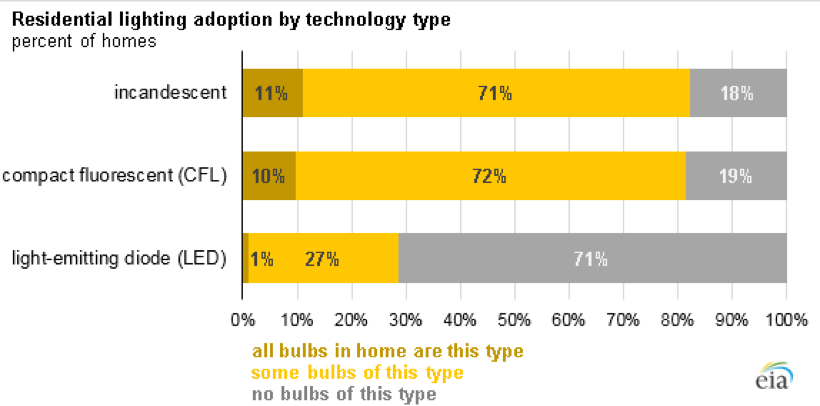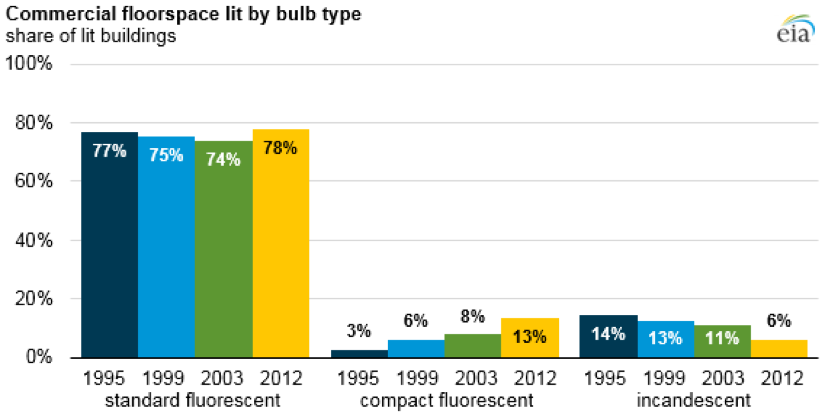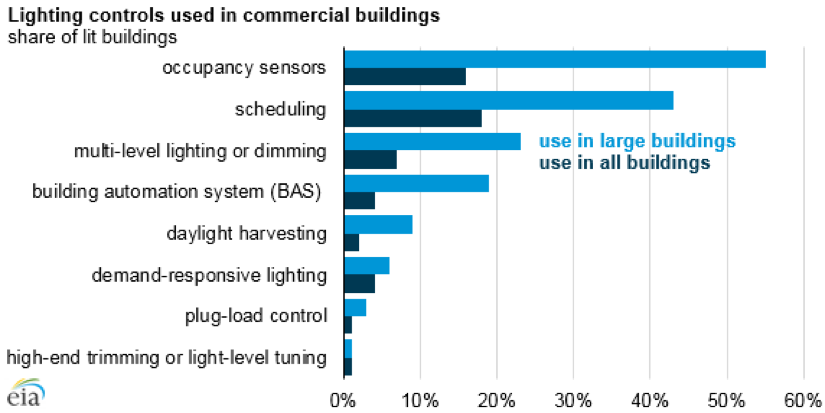
Earlier this year a group of national, regional, and local energy efficiency pros met to decide what we should ask people to do to make the greatest impact on energy efficiency across the United States. What is the big, bold action we are looking for to show people how to save energy and save money? What is the cutting-edge technology that we should urge people to adopt to slash their energy usage? It turns out that the best ask today is the old ask: Change a light bulb. So that’s what the Energy Efficiency Communicators Network, of which AEE is a member, is going to do for this year’s national Energy Efficiency Day, which is planned for October 5. Because it turns out that there are a lot of old light bulbs still burning, and wasting energy, out there.
In May, the U.S. Energy Information Administration (EIA) reported on the progress we have made as a nation converting to more efficient lighting systems. It turns out we really have a long way to go — both in residential and commercial buildings. This is pretty surprising, given major educational efforts to get us all to change our light bulbs and the tangible financial benefits that result with some of the best returns on energy efficiency investment.
As E&E News reported on the latest EIA data (Power-hogging light bulbs still dominate — EIA), “the least efficient light bulbs on the market still dominate use in American homes, suggesting the U.S. is a long way from maximizing energy savings,” as the chart below demonstrates. Despite the fact that only 11 percent of households use only incandescent lights, the least efficient option, 71 percent still have at least one bulb of that type. The findings were about the same for adoption of compact fluorescent lights (CFL), with 10 percent of households using only CFLs and 72 percent still using some incandescent. But the picture is significantly darker for light-emitting diodes (LED) bulbs — only 1 percent of households use only LEDs, 27 percent use some LEDs but also old light bulb technology, and 71 percent do not use any LEDs.
The good news is that the cost of both CFL and LED bulbs, product offerings have expanded and now many of us can simply leap-frog to the latest LED bulbs for greater savings, more choice, and perhaps the greatest benefit of all — less frequent light bulb replacement.

Source: U.S. Energy Information Administration, 2015 Residential Energy Consumption Survey
On the business front, EIA’s Commercial Buildings Energy Consumption Survey showed that while 78 percent of commercial buildings have adopted standard fluorescent lighting, a significant improvement over incandescent, only a small fraction have switched to compact fluorescent (13%), high-density discharge (5%), or LED (3%).

Source: U.S. Energy Information Administration, Commercial Buildings Energy Consumption Surveys
Note: 2003 CBECS data do not include enclosed malls or strip shopping centers.
However, EIA learned that large commercial buildings have advanced in lighting control systems, with a majority using occupancy sensors and more that 40 percent scheduling lighting to match building usage.

Source: U.S. Energy Information Administration, 2012 Commercial Buildings Energy Consumption Survey
Be glad you held out, but now it’s time to act.
This year’s national Energy Efficiency Day on October 5 gives you the opportunity to do just that — and engage your customers and constituents. The new campaign website shows how saving energy saves us money. We made it easy by sharing the top 5 ways to save at home and at work (actually we got carried away and shared 18 tips, just keep scrolling). Then we decided to tackle the easiest task anyone can do to make a difference now — simply to change one traditional or CFL bulb to LED.
How to Participate
AEE members, government agencies, corporations, state and regional partners, and individuals can help support Energy Efficiency Day 2017 by joining the campaign (we’ll display your organization’s name), sharing appropriate content and reaching out to your networks and the media on and before October 5. We are not requesting financial support, just communications support to promote the campaign and messaging.
- Use the campaign’s sample social media posts and content (or your own) to direct visitors to energy efficiency tips on your own website. You’ll find everything you need here.
- Write and post a blog about your energy efficiency success story, tips, or content ahead of Energy Efficiency Day, Oct. 5.
- Issue your own press statement urging your audiences to save energy, and save money.
- Ask your state and local lawmakers to officially proclaim Oct. 5 as Energy Efficiency Day.
- Promote your own energy efficiency success stories before, during and after the campaign.
- Take the Light Bulb Challenge or Office Lighting Challenge: pledge to upgrade to LEDs at home or work. And encourage your network to do the same and sign on.
- Help reach the media: pitch a story to a news outlet – mainstream and trade publications – about what your company or organization is doing to improve energy efficiency.
More About Energy Efficiency Day
Energy Efficiency Day (October 5) is a collaborative effort between regional and national organizations, business, utilities, and individuals working to promote energy efficiency: the cheapest, quickest way to meet our energy needs, cut consumer bills and reduce pollution. Our goals are to:
- Raise awareness of the energy issues we all face and what we can do to fix them
- Help individuals and businesses save money through education on efficiency techniques
- Unite people who are passionate about cutting energy waste and conserving resources
So what can you do, right here, right now? Click the button to find out!
